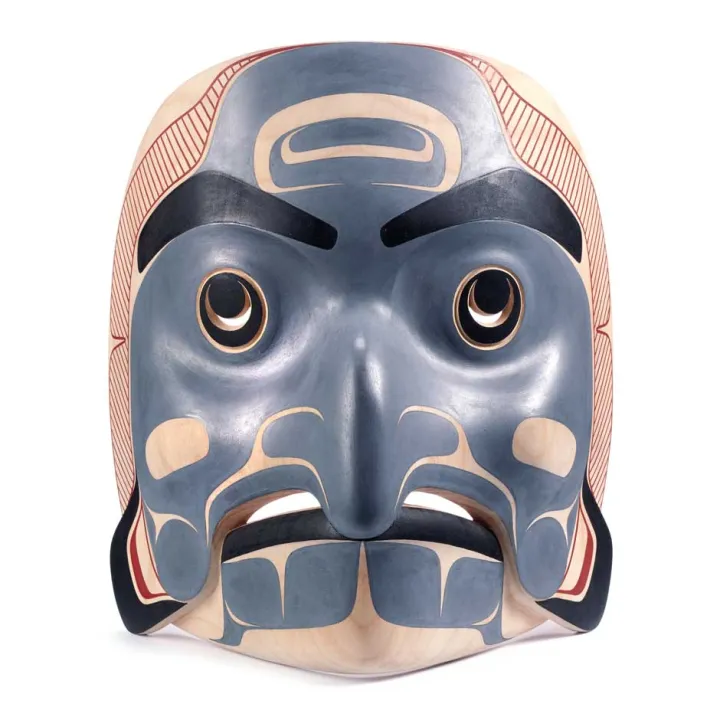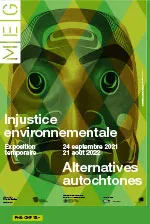Temporary Exhibition
Environmental Injustice - Indigenous Peoples’ Alternatives
24 September 2021 - 21 August 2022
The MEG presents its exhibition entitled “Environmental Injustice – Indigenous Peoples’ Alternatives”. The theme treated is the climate emergency, one of the major issues of our times, and the exhibition presents the perspectives, knowledge and knowhow used by Indigenous Peoples to deal with the damage to their lands accelerated by changes in climate.

Amiilgm Sm'ooygidm Hoon Salmon Chief Mask
By Gyibaawm Laxha - David R. Boxley (1981-)
Ts'msyen
United States, Alaska, Metlakatla
2020
Alder wood, acrylic paint
Made for the exhibition
MEG Inv. ETHAM 068762
© MEG, J. Watts
The Ts’myen of Alaska, the Amazigh of Morocco, the Anishinaabeg of the United States and Canada, the Sami of Fenno-Scandinavia, the Māori of New Zealand, the Maasaï of Kenya and Tanzania, the Ainu of Japan, the Islanders of the Marshall Islands, the Kalina of Guyana, all over the world nearly 500 million Indigenous Peoples are defending their rights in the face of the environmental injustice threatening their economies, health and cultures.
Indigenous Peoples are particularly vulnerable because of their close dependence on the natural environment for their culture, health and means of subsistence. These communities have an important role to play in the search for alternatives, thanks to their ancestral knowledge and know-how which are proving especially effective in the protection of biodiversity, soil, water and ecosystems.
The “Environmental Injustice – Indigenous Peoples’ Alternatives” exhibition invites these women and men anxious to assert their collective rights to control their lands to make their voices heard. Focused on the political, geographic and social situation of Indigenous Peoples in today’s world, it shows how they propose to alter the relationship to ecosystems in order to cope with the environmental damage accelerated by climate change. The exhibition presents the manner in which these communities are responding to these issues through an ethics of care and a culture of repair and reveals the way in which these peoples use their fundamental rights to resist environmental injustice, protect their lands and pass on their knowledge to younger generations.
Through biographies and video testimonies, and using artistic installations and specific case studies, the exhibition takes us from Alaska to Micronesia via Malaysia, Japan or Morocco. Five Indigenous artists, researchers and activists from the United States, Guyana and Norway have been invited to create works specifically for the MEG. David R. Boxley, Gavin Hudson, Kandi McGilton, Ti’iwan Couchili and Máret Ánne Sara take a thoughtful look at their lands, histories and communities and question the relationship we have with our ecosystems. Many other artists, as well as institutions in Switzerland and abroad, have also loaned contemporary creations from Canada, the United States, the Marshall Islands and Australia.
“This exhibition presents the ways in which Indigenous People’s knowledge and know-how can be used to protect the environment. The MEG gives the voice to women and men who demonstrate to us that another relationship with our planet is possible provided that their fundamental rights are respected”, explains Carine Ayélé Durand, the chief curator and exhibition curator.
The “Environmental Injustice – Indigenous Peoples’ Alternatives” exhibition is intended to be a space in which we can listen to the voice of Indigenous Peoples and with them weave a common future, one based on the values of care, protection, repair, respect and responsibility for our environment.
With the support of the Office of the United Nations High Commissioner for Human Rights


